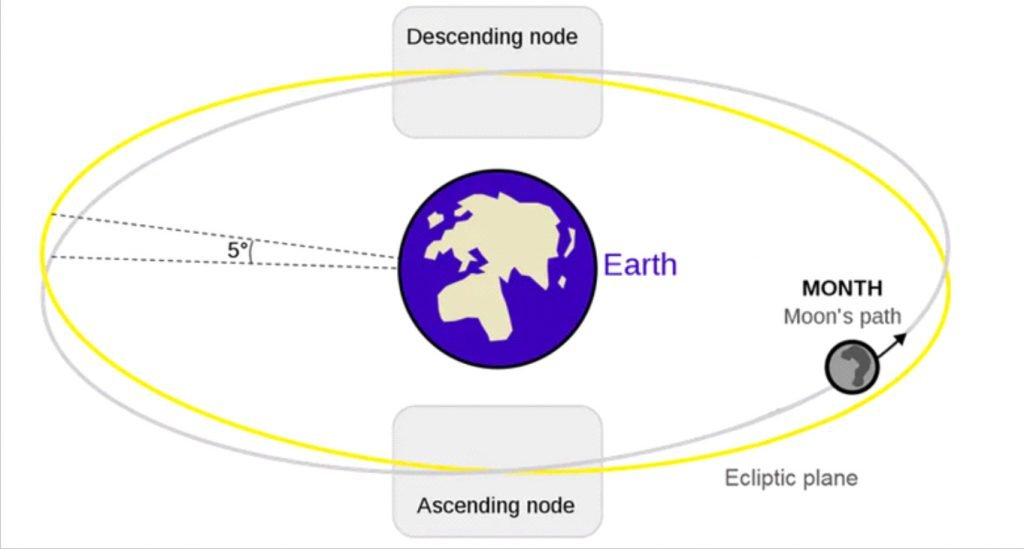Current Affairs (29th April 2021)
Vaccine pricing
Context:
- Recently, the Supreme Court flagged differential pricing for vaccines, and directed the central government to clarify in its affidavit the basis and rationale for pricing.
How does the government regulate the pricing of drugs?
- To ensure accessibility, the pricing of essential drugs is regulated centrally through The Essential Commodities Act, 1955. Under Section 3 of the Act, the government has enacted the Drugs (Prices Control) Order. The DPCO lists over 800 drugs as “essential” in its schedule, and has capped their prices.
- The capping of prices is done based on a formula that is worked out in each case by the National Pharmaceutical Pricing Authority (NPPA), which was set up in 1997.
Can the government regulate the price of Covid-19 vaccines through DPCO?
- Regulation through DPCO is not applicable for patented drugs or fixed-dose combination (FDC) drugs.
- Therefore, the price of the antiviral drug remdesivir, which is currently in great demand for the treatment of serious cases of Covid-19, is not regulated by the government.
- Last week, a notification by the Ministry of Chemicals & Fertilizers said that on the intervention of the government, major manufacturers/marketers of the remdesivir injection had reported voluntary reduction in the Maximum Retail Price (MRP).
- Globally, the American biotechnology firm Gilead Sciences owns the patent for the drug. Several pharma companies have obtained a licence from Gilead to manufacture remdesivir.
- To bring vaccines or drugs used in the treatment of Covid-19 such as remdesivir under the DPCO policy, an amendment can be brought.
What legal avenues are available for the government to address differential pricing for vaccines?
- THE PATENTS ACT, 1970
-
- This law, which was mentioned by the Supreme Court, has two key provisions that could be potentially invoked to regulate the pricing of the vaccine.
- Section 100 of the Patents Act gives the central government the power to authorise anyone (a pharma company) to use the invention for the “purposes of the government”. This provision enables the government to license the patents of the vaccine to specific companies to speed up manufacturing and ensure equitable pricing.
- Under Section 92 of the Act, which deals with compulsory licensing, the government can, without the permission of the patent holder, license the patent under specific circumstances prescribed in the Act.
- After the government issues a notification under Section 92, pharma companies can approach the government for a licence to start manufacturing by reverse engineering the product.
- However, in the case of biological vaccines like Covid-19, even though ingredients and processes are well known, it is difficult to duplicate the process from scratch. The process will also entail new clinical trials to establish safety and efficacy, which makes compulsory licensing less attractive.
- The World Health Organisation (WHO) is working to expand the capacity of low- and middle-income countries (LMICs) to produce Covid-19 vaccines and scale up manufacturing to increase global access to them.
- THE EPIDEMIC DISEASES ACT, 1897
-
- This has been the main legal weapon for the government in dealing with the pandemic.
- Section 2 of this law gives the government “power to take special measures and prescribe regulations as to dangerous epidemic disease”.
- These broad, undefined powers can be used to take measures to regulate pricing. However, the law lacks the teeth to implement such an important policy framework.
- Violation of the Act is penalised under Section 188 of the Indian Penal Code, which deals with “disobedience to order duly promulgated by (a) public servant”. The punishment prescribed under this law is imprisonment of up to six months or a fine that could extend up to Rs 1,000.
- Apart from these legislative options, experts suggest that the central government procuring directly from the manufacturers could be the most beneficial route to ensure equitable pricing. As the sole purchaser, it will have greater bargaining power.
Maiden trial of Python-5
Context:
- Tejas, India’s indigenous Light Combat Aircraft, added the 5th generation Python-5 Air-to-Air Missile (AAM) in its air-to-air weapons capability recently and test firing was conducted at Goa.
About:
- Trials were also aimed to validate enhanced capability of already integrated Derby Beyond Visual Range (BVR) AAM on Tejas.
- This has completed a series of missile trials. Derby missile achieved direct hit on a high-speed maneuvering aerial target and the Python missiles also achieved 100% hits, thereby validating their complete capability. The trials met all their planned objectives.
- Prior to these trials, extensive missile carriage flight tests were conducted at Bengaluru to assess integration of the missile with aircraft systems on board the Tejas, like Avionics, Fire-control radar, Missile Weapon Delivery System and the Flight Control System.
- At Goa, after successful separation trials, live launch of the missile on a Banshee target was carried out. Python-5 missile live firing was conducted to validate target engagement from all aspects as well as beyond visual ranges. In all the live firings, missile hit the aerial target.
- The missiles were fired from Tejas aircraft of Aeronautical Development Agency (ADA) flown by Indian Air Force (IAF) Test pilots belonging to National Flight Test Centre (NFTC).

Global Forest Goals Report 2021
Context:
- Recently, Global Forest Goals Report 2021 has been released by the Department of Economic and Social Affairs, United Nations.
About:
- The novel corona virus disease (COVID-19) pandemic has aggravated the challenges faced by countries in managing their forests. This has increased pressures on forest systems.
- Forests have been a lifeline for millions of people during the pandemic. Some of the most vulnerable segments of society, especially the rural poor and indigenous peoples have turned to forests for their most essential subsistence needs.
- The report draws upon 52 voluntary national reports and 19 voluntary national contributions, representing 75 per cent of forests in the world.
- It provides an initial overview of progress towards achieving the six Global Forest Goals and their 26 associated targets as contained within the United Nations Strategic Plan for Forests 2030.
- The United Nations Strategic Plan for Forests 2017-2030 was created with a mission to promote sustainable forest management and enhance the contribution of forests and trees to the 2030 Agenda for Sustainable Development.
- The Plan recognizes that in order to create a world in which forests could provide economic, social, environmental and cultural benefits for present and future generations, they will be needed by humanity in the first place.

- The first Global Forest Goal in the Plan provides for increasing forest area by three per cent by 2030.
- Climate change and a biodiversity crisis are other big threats to forest ecosystems besides the pandemic.
- The ‘Global Assessment Report on Biodiversity and Ecosystem Services’ of the Intergovernmental Science-Policy Platform on Biodiversity and Ecosystem Services (IPBES) had highlighted that one million species were at risk of extinction and that 100 million hectares of tropical forest were lost from 1980-2000.
- The report called for a future course of action that included greater sustainability and a greener and more inclusive economy to tackle the threats of COVID-19, climate change and the biodiversity crisis faced by forests.
Supermoon impact
Context:
- A “super full moon” came on April 27, 2021 and this led to a heightened risk of tidal flooding.
About:
- Exceptionally high tides are common when the moon is closest to the Earth, known as perigee, and when it’s either full or new.
- Right now, the phase of an 18.6-year lunar cycle lessens the moon’s influence on the oceans. The result can make it seem like the coastal flooding risk has leveled off, and that can make sea level rise less obvious.
- Global sea level is still rising with the warming planet, and that 18.6-year cycle will soon be working against us.
What the moon has to do with coastal flooding?
- The moon’s gravitational pull is the dominant reason behind tides on Earth. Earth rotating beneath the moon once per day and the moon orbiting around Earth once per month are the big reasons that the ocean is constantly sloshing around.
- Moon’s gravitational pull creates a bulge in the ocean water that is closest to it. There’s a similar bulge on the opposite side of the planet due to inertia of the water. As Earth rotates through these bulges, high tides appear in each coastal area every 12 hours and 25 minutes. Some tides are higher than others, depending on geography.
- The sun plays a role too: Earth’s rotation, as well as its elliptic orbit around the sun, generates tides that vary throughout the day and the year. But that impact is less than half of what the moon contributes.
Lunar nodal cycle
- Earth orbits the sun in a certain plane called the ecliptic plane. Suppose, plane being level for simplicity. Moon is orbiting the Sun and that orbit also lies on a plane, but it’s slightly tilted, about 5 degrees relative to the ecliptic plane.
- That means that the moon’s orbital plane intersects Earth’s orbital plane at two points, called nodes.

- The Moon’s orbital plane precesses, or wobbles, to a maximum and minimum of +/- 5 degrees over a period of about 18.6 years. This natural cycle of orbits is called the Lunar Nodal Cycle.
- When the lunar plane is more closely aligned with the plane of Earth’s equator, tides on Earth are exaggerated. Conversely, when the lunar plane tilts further away from the equatorial plane, tides on Earth are muted, relatively.
- By 2025, the lunar nodal cycle begins to contribute more and more to the perceived rate of sea level rise.

